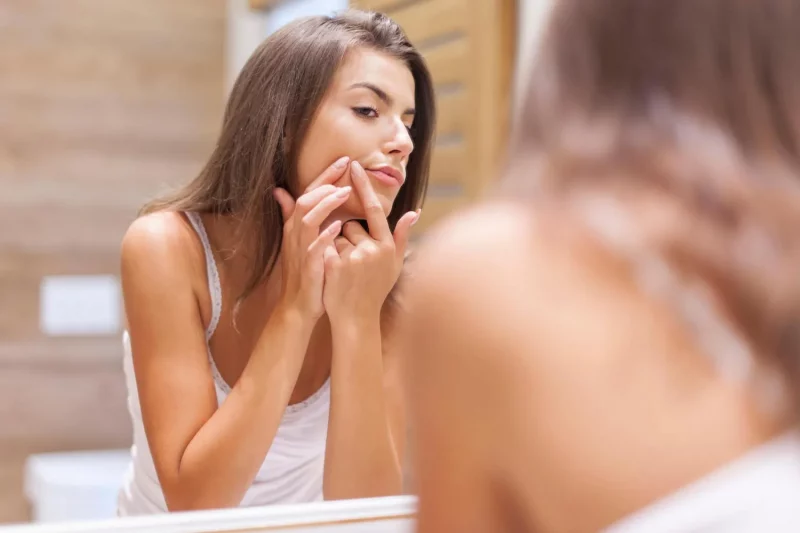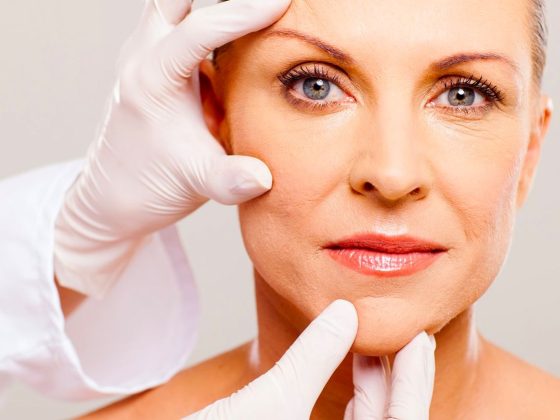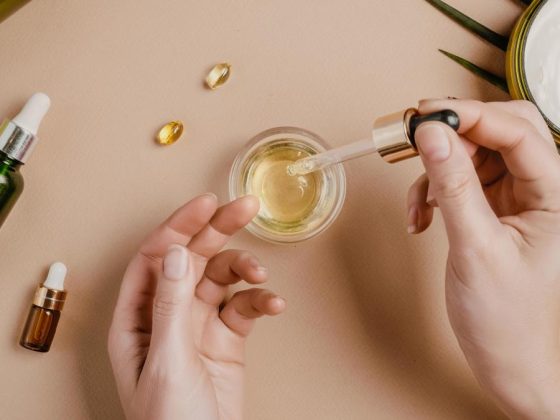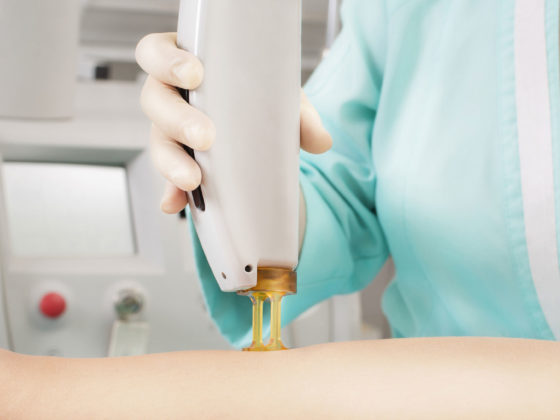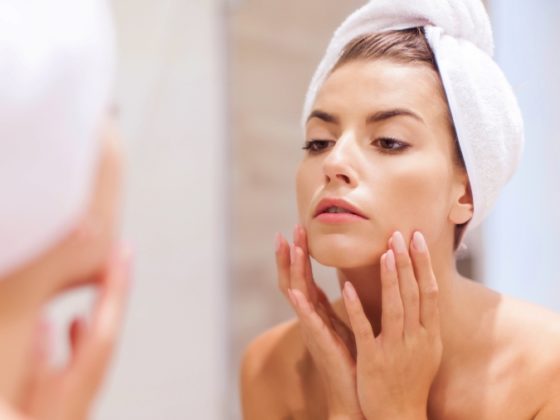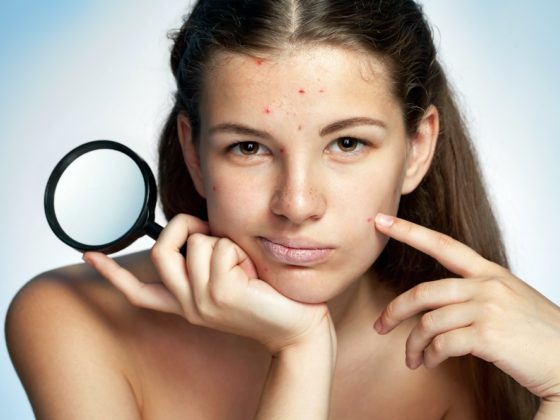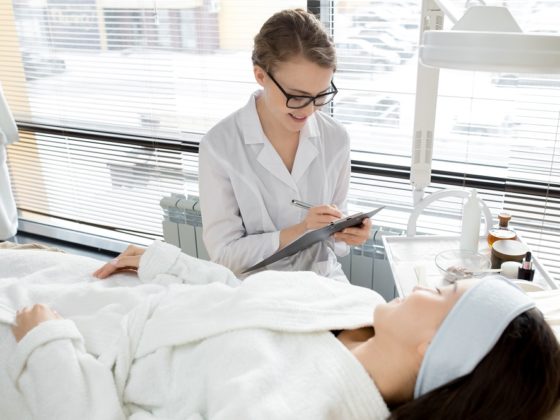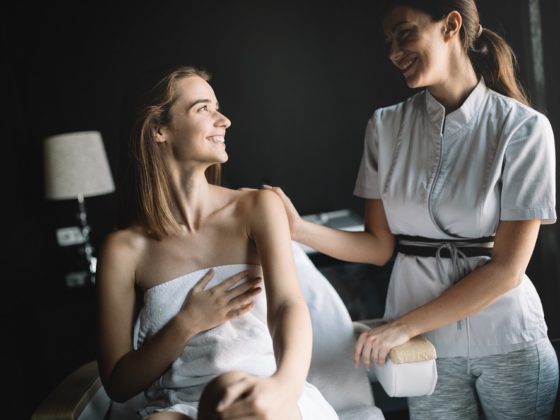Blemish busting, zit zapping and acne-fighting are all wrong. Here’s why caring for your skin is better than fighting it.
According to dermatologist Claire Beylot, M.D., “it seems like everyone has breakouts these days.”.
The number of patients contacting dermatologists for acne is increasing.
“Stress and disturbed sleep can cause flare-ups in people who do not usually get acne,” she says.
The upside is that three newly FDA-approved drugs for treating moderate to severe acne are available, along with a multitude of great over the counter topicals (like adapalene, a prescription retinoid).
The strategy for getting clear is also entirely different.
Stop trying to dry out your face and smother it with products, which usually lead to breakouts and inflammation.
Dermatologists recommend a gentler and more effective approach.
A SIMPLE, ACTIVE ROUTINE
How many of us have thrown every single thing we had at a pimple?
Then you use a cleanser for oily skin for instance, AHA serums, then benzoyl peroxide, which causes your skin to become irritated, causing more acne.
Dermatologist Linda Stein-Gold, M.D., says that overuse of products damages the skin’s protective barrier. “A compromised barrier can trigger a response that’s inflammatory and leads to more acne. It’s a horrible cycle.”
You can achieve better results by using a lot less active ingredients.
“Use only a single anti-acne product in the morning and evening,” advises Dr. Stein-Gold.
Benzoyl peroxide washes are effective at killing acne bacteria (brief contact does not irritate), or buy a non-irritating face wash and then a product that unclogs pores, such as one with azelaic or salicylic acid.
Dr. Stein-Gold recommends products that help control oil production.
To treat acne at night, use a mild cleanser followed by adapalene, a proven retinoid.
If inflammation persists, try Differin Gel 0.1% every other night and gradually increase it to nightly.
Furthermore, adapalene helps lighten dark spots after using other retinoids.
THE RIGHT WAY TO MOISTURIZE
Acne has many misconceptions, including a belief that moisturizing should be avoided.
Moisturizing alone, however, can actually reduce breakouts and prevent acne.
Keeping your skin moisturized can prevent breakouts and improve acne.
Glycerin, ceramides, or hyaluronic acid are the most effective ingredients to use.
Additionally, acne and rosacea, like eczema and rosacea, are both conditions that affect your barrier, so not moisturizing can cause more inflammation and worsen breakouts.
Dr. Beylot layers active ingredients into a hydrating, moisturizing formula to prevent any irritation and achieve better results.
Use an oil-free moisturizer, preferably with moisturizing agents like hyaluronic acid after cleansing at night, followed by a retinoid, then the same moisturizer again.
And remember, you need to wear a non comedogenic moisturizer for daily use.
USING COSMETICS
The entirety of your makeup routine should also consist of products that will not clog pores.
Look for the term “non comedogenic” in primers, foundations, and color cosmetics.
Brands that perform acne and allergy testing should have these on their labels.
THE RIGHT TIME TO SEE A DERMATOLOGIST
After 12 weeks, you should see a dermatologist if you’re still experiencing any deep scarring from cystic acne, or post-inflammatory hyperpigmentation.
In addition to prescription medications like topical prescription retinoids, Accutane, spironolactone, chemical peels, light therapies, and laser treatments, doctors can also offer and customize many gold-standard therapies to meet your skin and health needs.
REFERENCES:
- Waugh, John, Stuart Noble, and Lesley J. Scott. “Adapalene.” Drugs 64.13 (2004): 1465-1478.
- Evans, M. (2022, August 19). Top 21 best face washes & cleansers for oily skin and large pores – Ultimate Guide & Review. Healthy Beautiful. Retrieved November 16, 2022, from https://healthybeautiful.com/review/best-face-wash-oily-skin-acne-prone-sensitive/
- Welch, Samantha. “12 Exceptional AHA Serums (Alpha Hydroxy Acid) for Clear & Radiant Skin.”
- Ali, Saba M., and Gil Yosipovitch. “Skin pH: from basic science to basic skin care.” Acta dermato-venereologica 93.3 (2013): 261-269.
- Welch, Samantha. “Top 10 Best Benzoyl Peroxide Face Wash & Cleansers for Acne Prone Skin.”
- Zander, Ernst, and S. Weisman. “Treatment of acne vulgaris with salicylic acid pads.” Clinical therapeutics 14.2 (1992): 247-253.
- Capitanio, B., et al. “Randomized controlled study of a cosmetic treatment for mild acne.” Clinical and Experimental Dermatology: Clinical dermatology 37.4 (2012): 346-349.
- Evans, Michelle. “Top 12 Best Hyaluronic Acid Serums for All Skin Types: Acne-Prone, Oily, Dry, Sensitive Skin.” Healthy Beautiful, healthybeautiful.com/review/best-hyaluronic-acid-serums-for-all-skin-types-acne-prone-oily-dry-sensitive-skin. Accessed 16 Nov. 2022.
- Welch, Samantha. “Top 12 Best Non Comedogenic Moisturizers for Acne-Prone Skin.”
- Evans, Michelle. “Top 26 Best Non-Comedogenic Primers for Acne-Prone Skin.” Healthy Beautiful, healthybeautiful.com/review/best-non-comedogenic-primers-for-acne-prone-skin. Accessed 16 Nov. 2022.
- Evans, Michelle. “Top 8 Best Non Comedogenic Foundations for Acne Prone Skin.”
- Abel, E. A. “Isotretinoin (Accutane) therapy for acne in adolescents.” Adolescent medicine (Philadelphia, Pa.) 1.2 (1990): 315-324.
- Muhlemann, M. F., et al. “Oral spironolactone: an effective treatment for acne vulgaris in women.” British Journal of Dermatology 115.2 (1986): 227-232.
- Leyden, James, Linda Stein-Gold, and Jonathan Weiss. “Why topical retinoids are mainstay of therapy for acne.” Dermatology and therapy 7.3 (2017): 293-304.
- Kontochristopoulos, Georgios, and Eftychia Platsidaki. “Chemical peels in active acne and acne scars.” Clinics in dermatology 35.2 (2017): 179-182.
